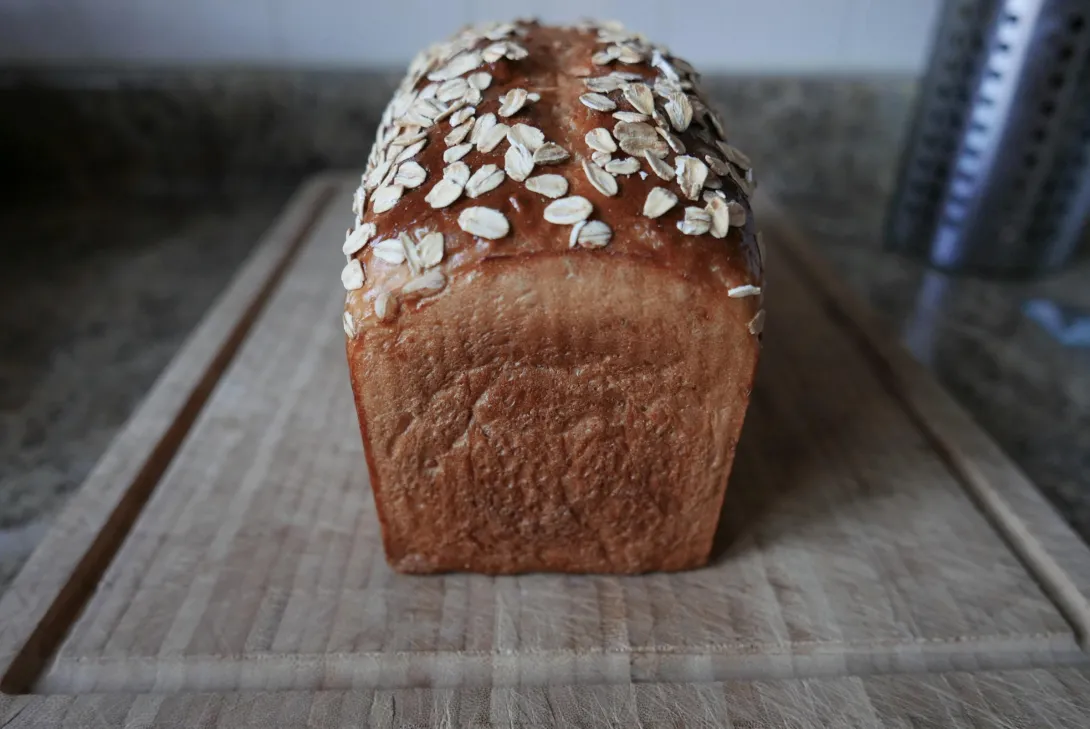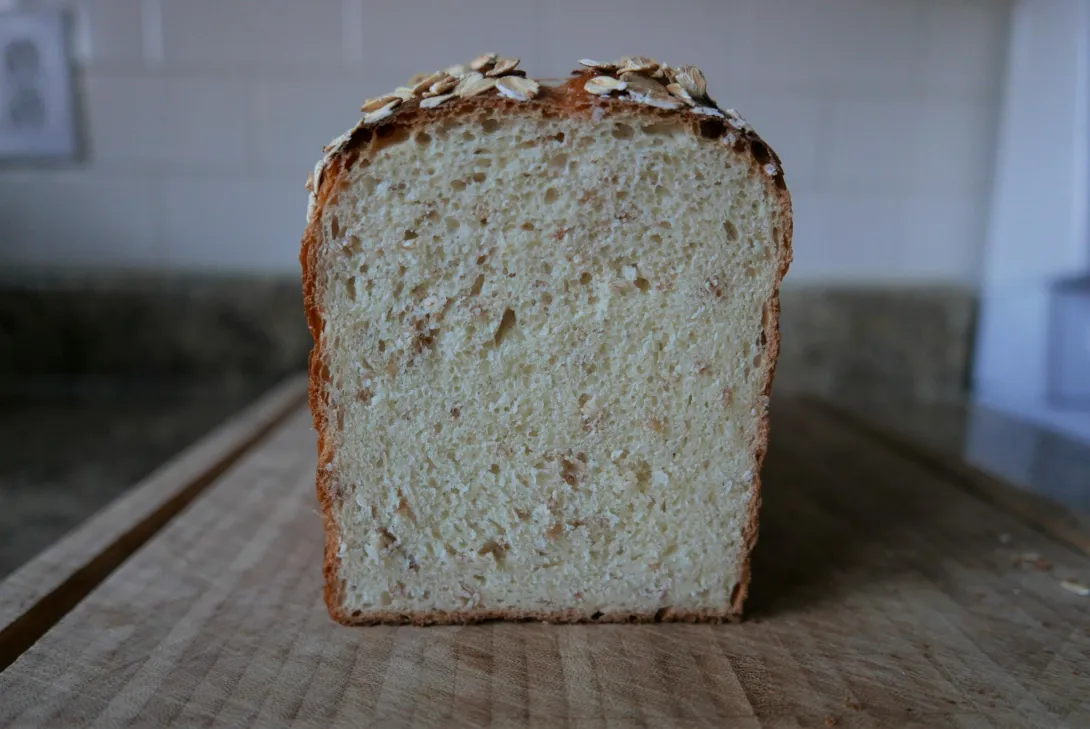
Made this loaf by Francisco Migoya because I was curious what the wheat gluten may add to the texture!
I don't think I saw much difference in the final bread texture.. If not, I found the crumb to be more dense that I am used to in loaves.
I read that it can help in breads using flour with less gluten (rye..). Maybe it's cause I used bread flour?
I was wondering if anyone had experimented with wheat gluten with good results?
Thanks :)
Image

Think of bread as a bunch of balloons held together by netting.
If the netting is thin and flimsy (low amount of gluten strands), it will not hold many balloons and the bunch will be small as the balloons escape.In bread terms, it will be either a crumbly,cakey loaf or a flat,dense loaf, depending on the proofing.
If the netting is thick and robust(bread flour or added vital wheat gluten), it can hold quite a few balloons and given the proper time (proper proof), the netting can be filled to capacity.This loaf can be dense and chewy if underproofed, lofty and slightly chewy if properly proofed and dense and chewy if overproofed and fallen.
If the netting gets old and fragile (overproofed,over acidifies & eaten away, destroyed by enzymes), more balloons will escape as you fill the netting and the bunch will be small.The dough pulls apart with broken hairlike strings on each end. This doughs chemical bonds are breaking and it is very fragile. This bread is usually gummy and dense.
The perfect balloon bunch is when the netting is firm but pliable,filled to capacity but not too thick. In bread terms, there are a million ways to achieve this using low protein flour to high protein flour. It is all in the handling.You can start out with low gluten that is properly mixed/activated, properly proofed that can end with a tender,feathery loaf. You can start with a high gluten flour and do a controlled proof to degrade the gluten to a less chewy state (traditional pannettone doughs or loaves made with long,acidic ferments), or you can start with high gluten dough, proof quickly (a relative term) to maximum height with no gluten degradation and have a slightly chewier loaf.
So when you experiment with bread, it is NOT just the recipe with ingredient amounts that affects the outcome but the handling and environment the dough is made in-ambient temperature,humidity,heat of baker's hands. Even a different crop of the same grain can affect the outcome. Flour,water,salt,yeast-one of the most complex simplicities that exists.
Have delicious fun
Hello Clazar!
Thank you for your response, makes sense. I probably should have left it to proof a little bit more to see the full potential of the added elasticity. I don't think I underproofed it!